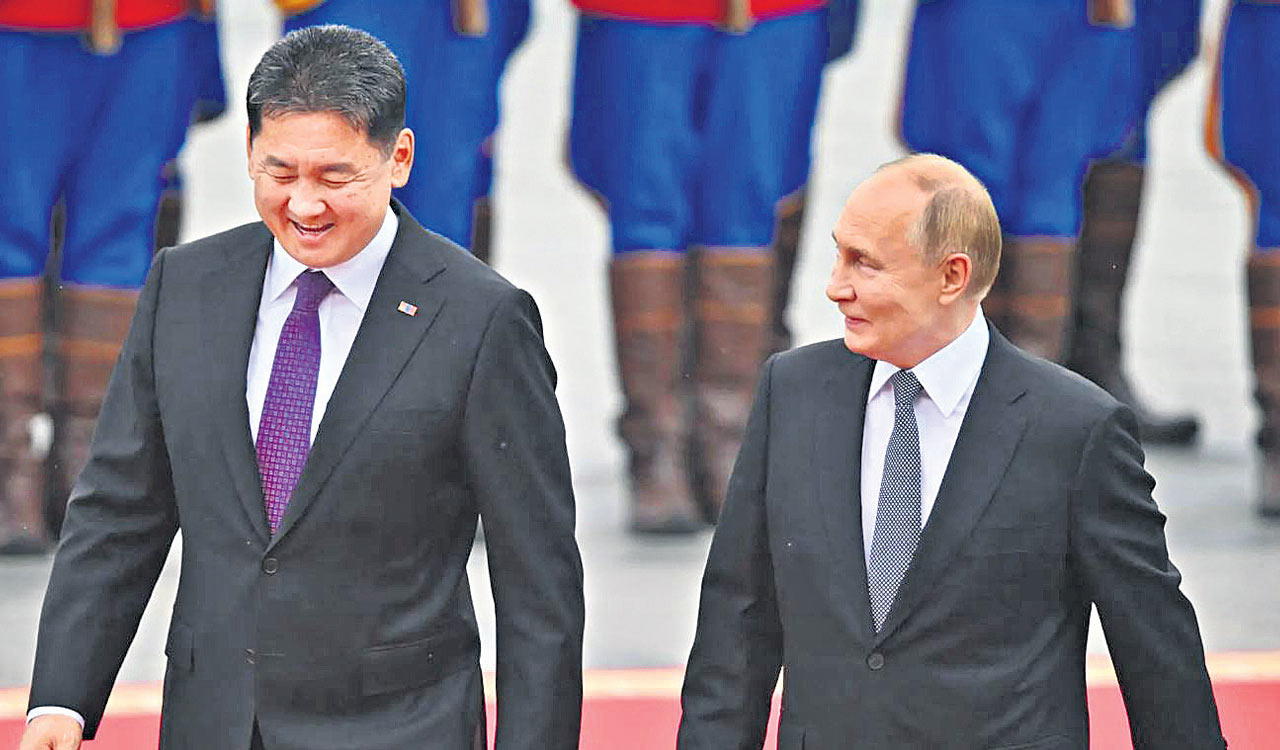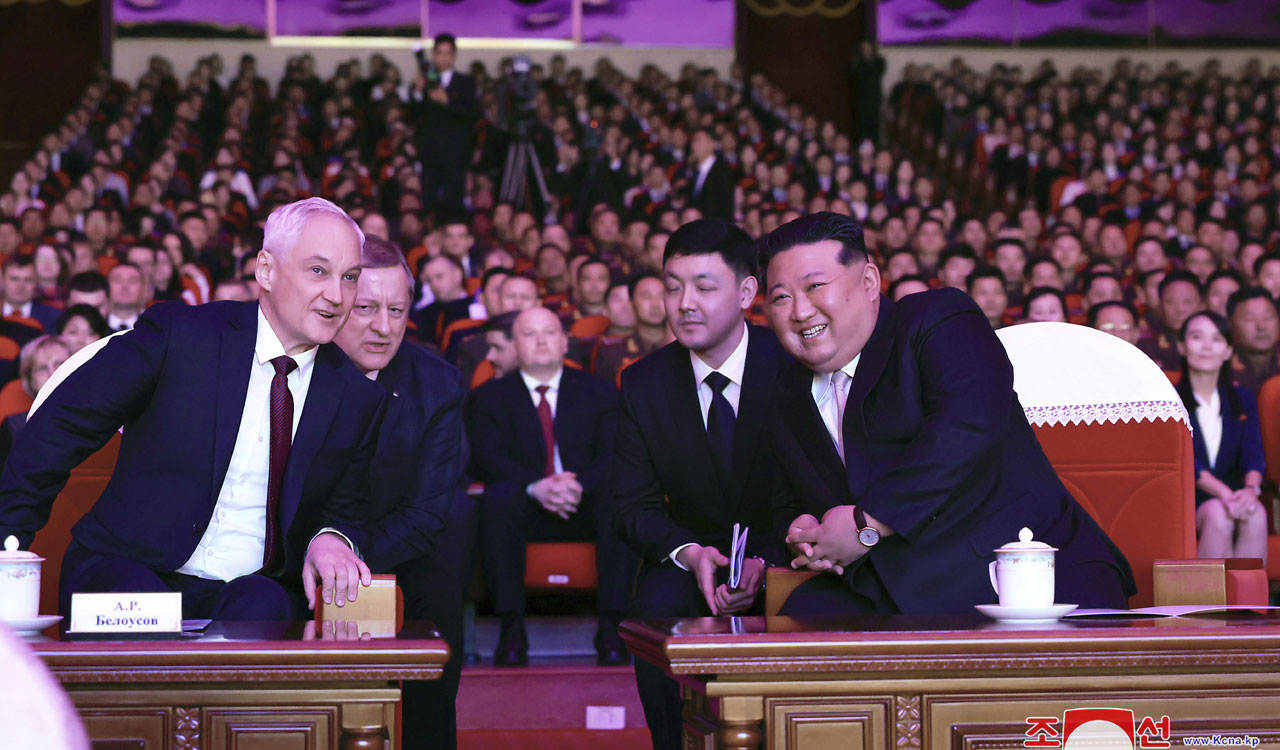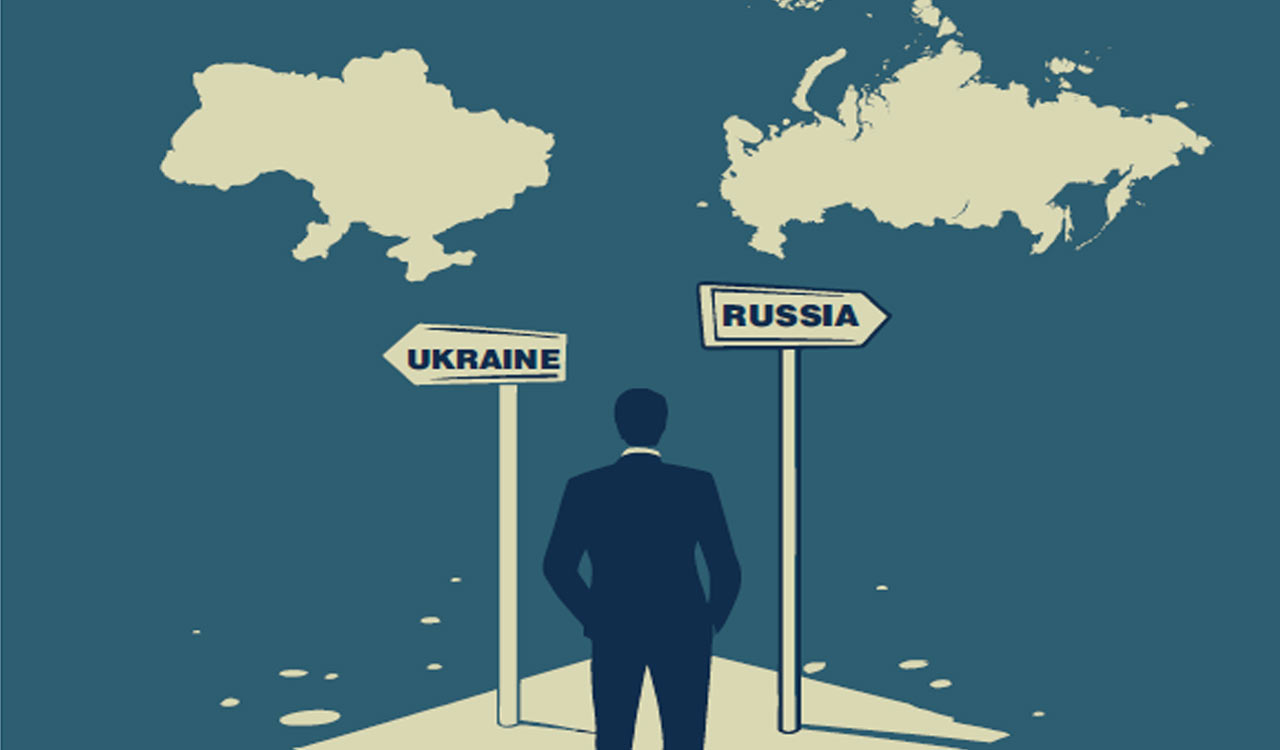Opinion: Why Russia needs Mongolia
Putin’s visit to Mongolia should be seen beyond symbolism and a course correction by Russia

By Rajoli Siddharth Jayaprakash
On September 2, a detachment of 20 horsemen in ceremonial uniforms akin to the ones donned by the personal guards of the first Genghis Khan of the Mongolian army gave a guard of honour for Russian President Vladimir Putin outside the Presidential palace in Ulan Bator. A rare event, it reflected the importance of Russia for Mongolia.
Putin visited Mongolia to celebrate the 85th anniversary of the joint victory on the Khalkhin-Gol River against the Japanese. This visit gained significant attention from the West, given Mongolia’s status as a Rome Statute signatory, which aligns it with the International Criminal Court’s jurisdiction that had issued an arrest warrant against Putin over alleged war crimes in Ukraine. Mongolia, however, snarked at requests to put handcuffs on its key strategic partner’s President.
The Western media coverage of Putin’s visit to Mongolia was seen as Russia’s ploy to manifest Russia-Mongolia relations as one being untouched by the forces of international law. However, contrary to such symbolistic statements, Putin’s reason for this visit, along with prospects of increasing bilateral partnership, was to course-correct and revive the Mongolian section of the Power of Siberia-2 pipeline, known as the Soyuz Vostok pipeline. The 962 km section of the pipeline is pivotal in the transhipment of 50 billion cubic metres of gas from Russia to China. Last month, the Mongolian National Action Plan 2024-28 had no mention of the construction of this pipeline, which stoked concerns about the project stalling.
The Outcomes
During his visit, President Putin highlighted the significant progress in Russia-Mongolia relations, noting a 21% increase in bilateral trade during the first seven months of 2024. Russia’s increasing interest in pivoting eastward since the 2010s has made Mongolia a crucial partner, strategically positioned between Russia and China. Dependence on these two countries for exports has reinforced its importance. Both nations reaffirmed their commitment to advancing the Mongolia-Russia-China Economic Corridor programme, a key component of China’s Belt and Road Initiative. They also expressed mutual interest in collaborating under Russia’s Greater Eurasia partnership and Mongolia’s Steppe Route.
Several key agreements were signed during the visit, including an intergovernmental agreement on the reconstruction of the TPP-3 thermal power plant in Mongolia’s capital Bator, agreements on petroleum product supplies and aviation fuel, and a memorandum of understanding focused on the conservation of Lake Baikal and the Selenga River.
Power of Siberia 2
Moscow was working on developing new pipeline routes towards the East to reduce its dependence on European markets. This initiative is evident in the plans for the Yakutia-Khabarovsk-Vladivostok pipeline, which was rebranded as the Power of Siberia in 2012. Managed by Gazprom, Russia’s major gas company, the Power of Siberia pipeline is designed to transport natural gas from the Kovykta and Chayanda fields in Yakutia, Russia, to Heihe in China. From there, the gas will continue through the Heihe-Shanghai pipeline, operated by the China National Petroleum Corporation. The agreement also involves a second Power of Siberia pipeline.
During Prime Minister Dmitry Medvedev’s 2019 visit to Mongolia, the launch of the Power of Siberia 2 pipeline, previously known as the Altai pipeline, was announced. A memorandum of understanding between Mongolia and Gazprom was signed to assess the pipeline’s feasibility. By the summer of 2020, Gazprom began the design and surveying for Power of Siberia 2 (POS-2).
In January 2022, the feasibility study was completed, and the initial pipeline route, including an entry point into Mongolia, was revealed. Mongolian regional authorities were tasked with overseeing the construction work. In July 2022, Mongolian Prime Minister L Oyun-Erdene projected that the construction of the Soyuz Vostok pipeline could start in 2024. Despite Mongolia’s enthusiasm, the pipeline’s exclusion from the national action plan has raised concerns in Russia.
Initially, Power of Siberia 2 did not include provisions for supplying to Mongolian domestic consumers, but during the visit, President Putin expressed openness to providing natural gas to Mongolia and supporting the country’s gasification efforts. At the Eastern Economic Forum in Vladivostok in the same week, Igor Kobzev, the governor of Irkutsk, stated that the project was undergoing an environmental assessment. Putin’s visit to Mongolia and the agreements signed dispel the narrative of the POS-2 pipeline stalling. However, with no conclusive agreement between Russia and China on modalities such as gas pricing, sharing of construction costs and other issues, the construction of the pipeline could be delayed.
Win-Win
Putin’s visit to Mongolia is a win-win for Moscow and Ulan Bator. For Moscow, the shrinking of markets due to sanctions imposed on Russia has led to a new market emerging in Mongolia. For Mongolia, Russian investments and increasing cooperation between the two nations create a more competitive market in Mongolia and reduce its dependence on Chinese exports.
The Belt and Road initiative has been crucial for Mongolia as it aims to boost connectivity, bringing Ulan Bator out of relative isolation. This increasing interaction between China and Mongolia has increased fears of a total Chinese monopoly in Mongolia; thus, the Russian outreach is welcome. Putin’s visit to Mongolia possibly dispelled the narratives of the power of the Siberia-2 pipeline being de-railed and set grounds for enhanced Russia-Mongolia cooperation.

(The author is Research Assistant at Observer Research Foundation)
Related News
-
Telangana techie loses Rs 4.15 lakh to online gold trading fraud
4 mins ago -
Hyderabad: Couple working as house help at doctor’s residence held for theft
19 mins ago -
Hyderabad auto driver foils attempt to kidnap young woman, five held
1 hour ago -
Haiti gang attack on journalists covering hospital reopening leaves 2 dead, several wounded
2 hours ago -
21 dead as Mozambique erupts in violence after election court ruling
3 hours ago -
Cartoon Today on December 25, 2024
10 hours ago -
Sandhya Theatre stampede case: Allu Arjun questioned for 3 hours by Chikkadpallly police
11 hours ago -
Telangana: TRSMA pitches for 15% school fee hike and Right to Fee Collection Act
11 hours ago




